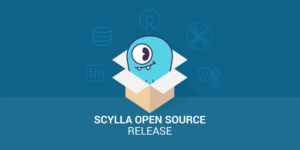
The Satori Threat Intelligence and Research Team at Human identified a new wave of cyberattacks involving the use of malicious applications against iOS and Android users. The alarming fact is that these infected apps boast millions of downloads.
The good news is that the attack has been halted by Apple and Google after their prompt response to the researchers.
Malicious Apps Found On Legitimate Platforms.
Reportedly, 89 malicious apps were discovered and used in a mobile fraud ad campaign. The apps collectively boasted around 13 million downloads. The researchers have dubbed this campaign Scylla.
Per their research, this campaign is the third installment of the Poseidon fraud campaign discovered in 2019, and its second installment was named Charybdis, which was detected in 2020.
You may be wondering where have you heard the term Scylla and Charybdis before. “Being between Scylla and Charybdis” is an idiom deriving from Greek mythology, which has been associated with the proverbial advice “to choose the lesser of two evils”.
In Greek mythology, Scylla and Charybdis were two monsters who lived on either side of a narrow channel of water. Scylla was a six-headed monster (also featured in the TV series Prison Break) who lived on a rock in the middle of the channel. Charybdis was a whirlpool who lived on the other side of the channel.
As for the malicious campaign, out of these 89 apps, 89 are Android, and 9 are iOS-based apps. The malicious apps perform ad fraud via hidden apps, spoofing, and fake clicks. What makes Scylla different from the earlier two mobile fraud campaigns is that this time the attackers have found a way to target iOS devices too.
Campaign Analysis.
According to the company’s blog post, just like the Charybdis campaign, the apps used in Scylla also contained obfuscated code. The attack mechanism is also somewhat the same as the apps target advertising software development kits/SDKs.
It is worth noting that some apps contained code that posed as completely different when observed by advertisers and ad tech firms.
Application Detailed Overview.
Human researchers detected 29 Android apps posed as more than six thousand CTV-based apps to encourage higher ad proceeds than mobile games. Conversely, some apps contained code that informed advertisers of the ads they displayed to the user.
This means the code rendered ads after the apps were closed, such as when the home screen was on. Some apps captured the information about what ads the user clicked on and transferred the info to advertisers as a fake click. Most of the malicious apps were games.
Google and Apple were promptly informed about malicious apps’ presence and quickly removed from their respective platforms. Advertising SDK developers were also informed about the attack.
Human also published a list of malicious apps and urged users to remove them if installed on their devices. To remove these apps, just tap and hold the App and tap on the Remove option. Then tap on Delete App.
